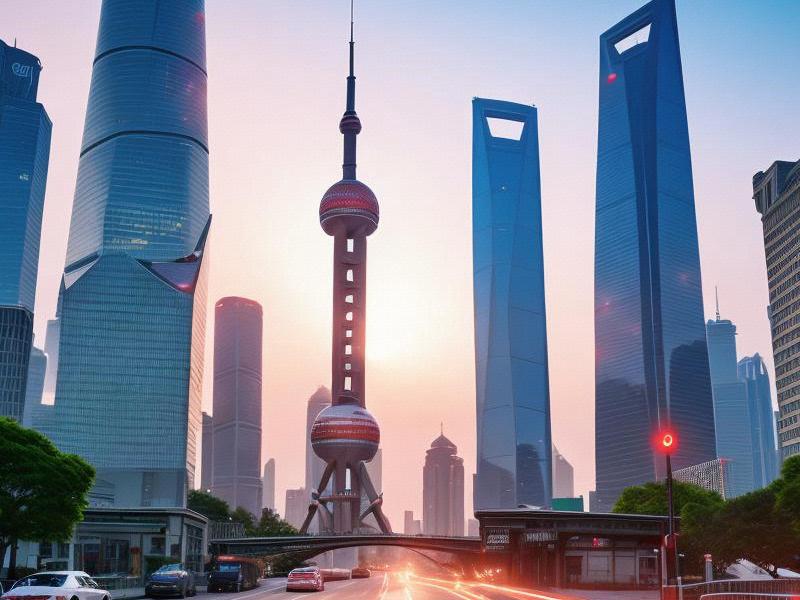This article provides a comprehensive overview of Shanghai, one of the most dynamic and influential cities in China, and its surrounding areas. It delves into the city's urban development, cultural heritage, economic growth, and the unique characteristics of its neighboring regions.

Shanghai, often referred to as the "Pearl of the Orient," stands as a beacon of modernity and tradition in China. As the largest city in the country, Shanghai is a melting pot of cultures, a hub for international trade, and a symbol of China's rapid economic rise. This article aims to provide a detailed exploration of Shanghai and its surrounding areas, highlighting their unique features and the factors that contribute to their significance.
Urban Development in Shanghai
Shanghai's urban landscape is a testament to its transformation over the past few decades. Once a small fishing village, the city has grown into a sprawling metropolis with a population exceeding 24 million. The Pudong area, in particular, has undergone remarkable development, transforming from farmland into a futuristic financial district.
The iconic skyline of Shanghai is dominated by the Oriental Pearl Tower, the Jin Mao Tower, and the Shanghai Tower, which is the tallest building in China. These structures symbolize the city's ambition and its status as a global financial center. The Bund, a historic waterfront area, offers a contrasting view of the city's past and present, with its colonial-era buildings standing alongside modern skyscrapers.
Shanghai's urban planning is characterized by a focus on sustainability and livability. The city has invested heavily in public transportation, including the world's first maglev train, which connects Pudong International Airport to the city center. Additionally, green spaces such as Century Park and Zhongshan Park provide residents and visitors with areas to relax and enjoy nature amidst the urban hustle.
Cultural Heritage
上海贵族宝贝自荐419 Despite its rapid modernization, Shanghai has managed to preserve its rich cultural heritage. The city is known for its unique blend of traditional Chinese and Western influences, which is evident in its architecture, cuisine, and arts.
The Yu Garden, a classical Chinese garden built in the Ming Dynasty, is a popular tourist attraction that showcases the city's historical charm. The nearby Yuyuan Bazaar offers a glimpse into the traditional way of life, with its narrow streets lined with shops selling everything from silk garments to traditional Chinese medicine.
Shanghai's culinary scene is another aspect of its cultural heritage. The city is famous for its "Shanghainese cuisine," which emphasizes fresh ingredients, delicate flavors, and intricate preparation techniques. Dishes such as xiaolongbao (soup dumplings) and shengjianbao (pan-fried buns) are must-tries for food enthusiasts.
The arts scene in Shanghai is thriving, with numerous museums, galleries, and theaters showcasing both traditional and contemporary works. The Shanghai Museum, one of the largest and most prestigious museums in China, houses an extensive collection of Chinese art, including ancient ceramics, calligraphy, and paintings.
Economic Growth
Shanghai's economic growth has been nothing short of remarkable. As one of the four direct-controlled municipalities of China, the city enjoys a high degree of autonomy and significant policy support from the central government. This has enabled Shanghai to become a leading global financial center, a hub for trade and commerce, and a center for innovation and technology.
上海品茶论坛
The city's strategic location on the Yangtze River Delta makes it a key player in China's economic development. Shanghai Port is the busiest container port in the world, handling millions of containers annually. The city's free trade zones, such as the Shanghai Pilot Free Trade Zone, have attracted numerous multinational corporations and foreign investors.
In recent years, Shanghai has also made significant strides in the technology and innovation sectors. The Zhangjiang Hi-Tech Park, often referred to as "China's Silicon Valley," is home to numerous high-tech companies, research institutions, and startups. The city's commitment to innovation is further demonstrated by its efforts to develop smart city technologies, which aim to improve the quality of life for its residents through the use of advanced information and communication technologies.
Surrounding Areas
The surrounding areas of Shanghai are equally fascinating, offering a glimpse into the diverse landscapes and cultures of the region. The Yangtze River, the longest river in China, flows through the heart of the city and provides a vital transportation route for goods and people.
The nearby city of Suzhou, often referred to as the "Venice of the East," is renowned for its classical gardens, silk production, and traditional craftsmanship. The Humble Administrator's Garden, one of the most famous gardens in China, is a UNESCO World Heritage Site that showcases the art of Chinese garden design.
上海品茶工作室 Nanjing, the capital of Jiangsu Province, is another important city in the region. Known for its rich history and cultural heritage, Nanjing was the capital of several Chinese dynasties and is home to numerous historical landmarks, including the Sun Yat-sen Mausoleum and the Ming Xiaoling Mausoleum.
The Lake Taihu area, located to the west of Shanghai, offers a tranquil escape from the urban hustle. The lake and its surrounding mountains provide opportunities for outdoor activities such as boating, hiking, and cycling. The region is also known for its produce, including the famous Taihu biluochun tea.
Conclusion
Shanghai and its surrounding areas are a microcosm of China's rapid development and cultural diversity. The city's urban landscape, cultural heritage, economic growth, and the unique characteristics of its neighboring regions make it a fascinating subject of study and exploration.
As Shanghai continues to evolve, it remains a symbol of China's ambition and its commitment to becoming a global leader. The city's ability to balance modernization with the preservation of its cultural heritage is a testament to its resilience and adaptability.
In conclusion, Shanghai and its surroundings offer a rich tapestry of experiences for residents and visitors alike. Whether it's exploring the city's iconic landmarks, savoring its culinary delights, or immersing oneself in its vibrant arts scene, there is something for everyone in this dynamic and ever-changing region.